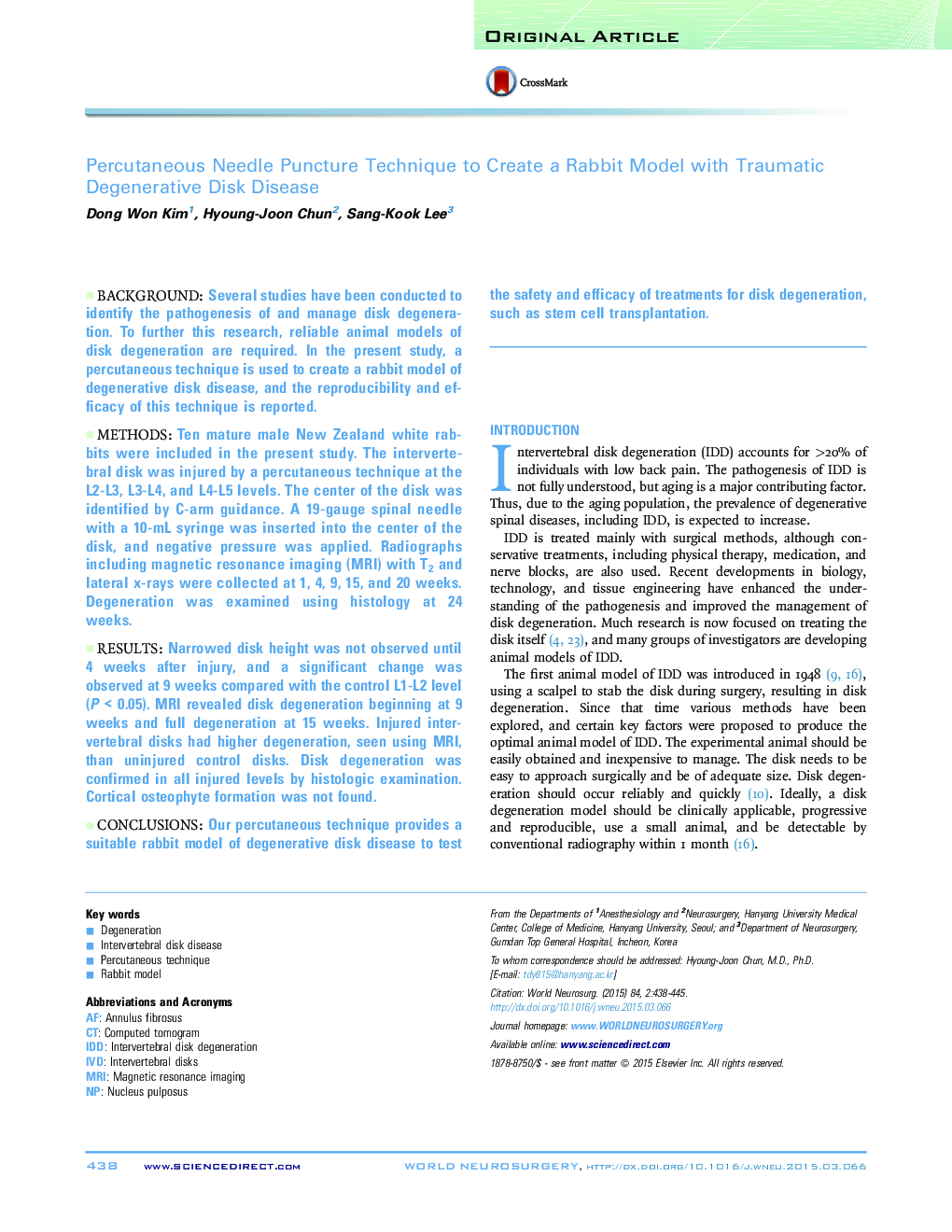| Article ID | Journal | Published Year | Pages | File Type |
|---|---|---|---|---|
| 3094804 | World Neurosurgery | 2015 | 8 Pages |
BackgroundSeveral studies have been conducted to identify the pathogenesis of and manage disk degeneration. To further this research, reliable animal models of disk degeneration are required. In the present study, a percutaneous technique is used to create a rabbit model of degenerative disk disease, and the reproducibility and efficacy of this technique is reported.MethodsTen mature male New Zealand white rabbits were included in the present study. The intervertebral disk was injured by a percutaneous technique at the L2-L3, L3-L4, and L4-L5 levels. The center of the disk was identified by C-arm guidance. A 19-gauge spinal needle with a 10-mL syringe was inserted into the center of the disk, and negative pressure was applied. Radiographs including magnetic resonance imaging (MRI) with T2 and lateral x-rays were collected at 1, 4, 9, 15, and 20 weeks. Degeneration was examined using histology at 24 weeks.ResultsNarrowed disk height was not observed until 4 weeks after injury, and a significant change was observed at 9 weeks compared with the control L1-L2 level (P < 0.05). MRI revealed disk degeneration beginning at 9 weeks and full degeneration at 15 weeks. Injured intervertebral disks had higher degeneration, seen using MRI, than uninjured control disks. Disk degeneration was confirmed in all injured levels by histologic examination. Cortical osteophyte formation was not found.ConclusionsOur percutaneous technique provides a suitable rabbit model of degenerative disk disease to test the safety and efficacy of treatments for disk degeneration, such as stem cell transplantation.
